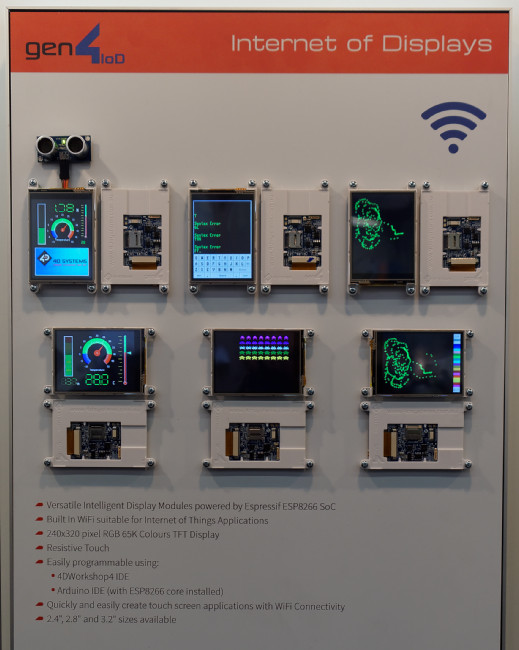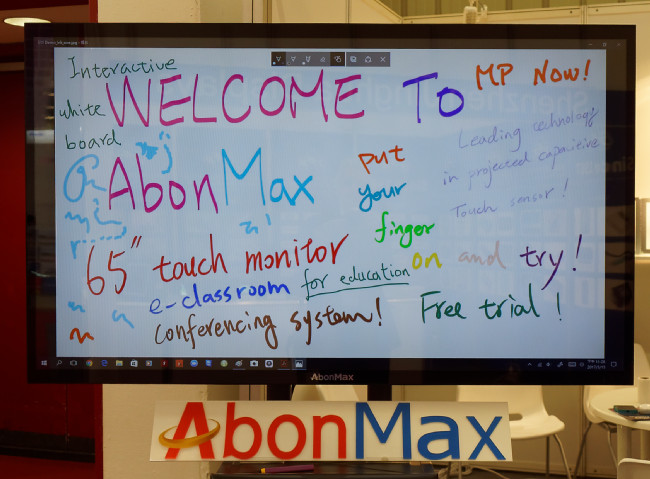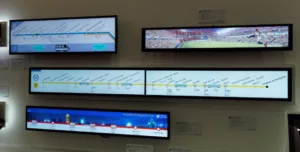4D Systems has developed ‘microLCDs’ that are complete display systems including controllers that use 0.7″ 80 x 160 displays. The displays are driven using SBI cost $4.95, one off and the company, which is based in Australia, has manufacturing in the Philippines and China. The power consumption is 20ms.
 4D’s Small LCDs cost $4.95 – one off! Image:Meko
4D’s Small LCDs cost $4.95 – one off! Image:Meko
As well as displays, 4D makes low end graphic controllers and processors, the Goldelox (8 bit CPU interface) and the Picasso & Diablo 16 (16 bit interface). A special feature is a very simple design interface for its SDK that can be used by non-technical staff to develop complete interfaces using drag-and-drop widgets.
The firm also makes bigger displays that include driving by Wi-fi and it calls these displays the IoD or Internet of Displays. The 2.4″ systems have 240 x 320 resolution and include resistive touch. One off pricing is $29, so the display systems are ideal for the ‘maker communities’ around the Raspberry Pi or the Arduino. 2.8″ and 3.2″ options are available and 4D plans to add OLED-based units, later. Multiple displays can be controlled and co-ordinated.
 4D’s IoD Displays include integrated Wi-Fi and are ideal for ‘makers’. Image:Meko
4D’s IoD Displays include integrated Wi-Fi and are ideal for ‘makers’. Image:Meko
AbonMax had a good looking 65″ PCap display. When we couldn’t see any sign of a metal mesh electrode pattern, we asked about the material used and AbonMax told us that it was using ITO with controllers from ETI. The firm also works with Weida Technology of Taiwan, which designs controllers. The company is looking for OEM partners to sell the displays but has only 65″ at the moment, and the displays do not have intelligence; the unit at the show was running Windows on an Intel NUC.

We tend to think of Advantech for OPS modules and PC systems, but the company also has a display division that was showing a curved 42″ display, shown in portrait mode and fitted with PCap touch. The current version is FullHD, although a 43″ UltraHD version is also under development. The display uses a Xytronic sensor based on copper at the moment, but other technologies are under consideration. The display is shipping now and is almost entirely being sold into casinos and gambling locations, where large curved displays are proving very popular compared to dual display gaming machines.

